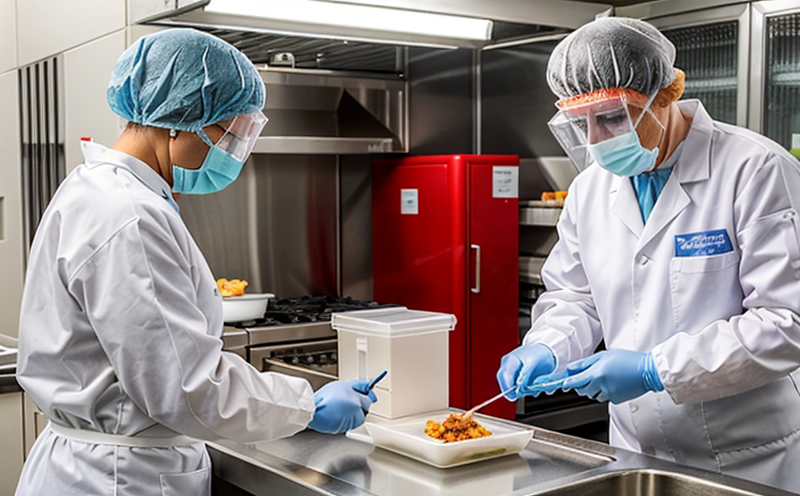FDA BAM Chapter 28 Detection of Hepatitis A Virus in Soft Fruits
The FDA Bacteriological Analytical Manual (BAM) is a widely recognized resource for microbiological methods used by the food industry and regulatory agencies. One of its key chapters, Chapter 28, outlines procedures specifically designed to detect the presence of Hepatitis A virus in soft fruits. This service plays an essential role in ensuring that the food products consumed are safe from viral contamination.
Soft fruits such as strawberries, raspberries, and blueberries have a delicate texture which can be easily damaged during processing or handling. This fragility makes them particularly susceptible to contamination by viruses like Hepatitis A, which can thrive under conditions found in improperly handled food products. By adhering strictly to the FDA BAM Chapter 28 guidelines, we ensure that our clients receive accurate and reliable results.
The process begins with meticulous sampling of the fruit samples followed by thorough extraction techniques aimed at releasing any viral particles present within the sample matrix. The extracted material is then subjected to a series of stringent tests designed to identify traces of Hepatitis A virus DNA/RNA. These procedures are carried out using highly sensitive laboratory instruments and reagents that meet or exceed international standards including ISO 17025.
The results generated from these analyses provide critical information about the potential presence of harmful pathogens in food products, enabling producers to take corrective actions promptly if necessary. This not only enhances public health but also protects brand reputation by maintaining product quality and safety.
Our team comprises experienced microbiologists equipped with state-of-the-art equipment capable of detecting even minute quantities of virus particles. We employ advanced techniques such as RT-qPCR (Reverse Transcription Quantitative Polymerase Chain Reaction) to ensure high specificity and sensitivity in our detection methods. This approach allows us to differentiate between closely related strains of Hepatitis A, providing valuable insights into the source and spread of contamination.
By partnering with us for your FDA BAM Chapter 28 testing needs, you gain access to comprehensive support from knowledgeable professionals dedicated solely to ensuring food safety standards are met. Our commitment extends beyond just compliance; it encompasses proactive measures aimed at preventing future outbreaks through rigorous quality control practices.
| Sample Type | Preparation Method | Test Procedure | Expected Result |
|---|---|---|---|
| Soft Fruits | Vibrionomyce extraction followed by homogenization in buffer solution containing protease | RT-qPCR amplification of target sequences | Detection or non-detection of Hepatitis A virus (HAV) RNA |
Scope and Methodology
The scope of this service covers the analysis of soft fruits according to FDA BAM Chapter 28 procedures. This includes the extraction, preparation, and testing phases aimed at detecting Hepatitis A virus (HAV) DNA/RNA in these products.
| Step | Description |
|---|---|
| Sampling | Select representative samples from various batches of soft fruits |
| Vibrionomyce Extraction | Remove cell wall using enzymatic treatment followed by mechanical disruption |
| Homogenization | Mix the extracted material with a buffer solution containing protease to enhance extraction efficiency |
| RT-qPCR Amplification | Analyze the prepared samples using real-time PCR technology to detect HAV RNA |
International Acceptance and Recognition
The FDA BAM Chapter 28 is internationally recognized for its robust guidelines on the detection of Hepatitis A virus in soft fruits. Compliance with these standards ensures that your products meet global regulatory requirements, enhancing trust among consumers worldwide.
Many countries around the world rely on similar methodologies outlined in international standards such as ISO 17025 and EN ISO/IEC 17025 for laboratory accreditation, ensuring consistency across different jurisdictions. By adhering to FDA BAM Chapter 28 protocols, you demonstrate your commitment to maintaining high standards of food safety.
This service not only helps meet legal obligations but also contributes significantly towards protecting public health and fostering consumer confidence in your brand. It is essential for companies involved in the production or distribution of soft fruits to ensure their products comply with these stringent testing procedures.
Competitive Advantage and Market Impact
- Ensure compliance with FDA BAM Chapter 28 standards, enhancing your product's safety profile
- Showcase your dedication to maintaining high-quality food production practices
- Differentiate yourself from competitors by offering superior testing capabilities
- Increase market share through improved brand reputation and customer trust





